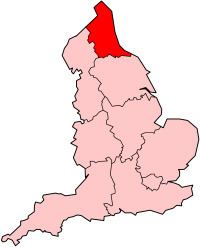Founder One North East Type of business Not for profit company | Key people Andrew Jamieson (CEO) Founded 2002 | |
 | ||
Industry Renewable energyEnergy efficiency Services TestingCertificationDemonstration Website | ||
Narec, since 2014 known as the National Renewable Energy Centre, is a part of the Offshore Renewable Energy (ORE) Catapult, an English technology innovation and research centre for offshore wind power, wave energy, tidal energy and low carbon technologies. The centre operates multi-purpose offshore renewable energy test and demonstration facilities. It is very similar to other centres, such as NREL in the US and National Centre for Renewable Energies (CENER) in Spain. The National Renewable Energy Centre is based in Blyth, Northumberland.
Contents
- History
- Operations
- Wind turbine rotor blades
- Power trains and components
- Electrical networks
- Subsea trials and demonstrations
- Resource measurement and assessment
- Clothier High Voltage Laboratory
- Charles Parsons Technology Centre
- Training tower
- Dry docks
- Power train test facilities 3MW and 15MW
- Blade test 1 2
- European funded research
- Conferences and papers
- References
History
Originally known as NaREC (New and Renewable Energy Centre), the centre was created in 2002 by One NorthEast, the North East regional development agency, as part of the Strategy for Success programme. In 2010 the organisation changed its name to Narec (National Renewable Energy Centre). In April 2014, the organisation merged with the Offshore Renewable Energy (ORE) Catapult to focus on the development and cost reduction of offshore wind, wave and tidal energy across the UK.
The organisation was originally involved in a wide range of technologies, including:
In 2010, due to UK government cutbacks Narec closed, sold off or separated different parts of the business. Now, Narec itself concentrates on testing blades and drive trains for marine renewables. Spin off companies include:
Narec Distributed Energy - An organisation which deals with microrenewables, energy efficiency, low carbon transport and city wide energy planning. Narec Distributed Energy is 100% owned by Narec.
Narec Solar - 8% owned by Narec, and 92% owned by the Swedish firm Absolicon. This organisation is focused on silicon photovoltaic cells
Narec Capital - A financial organisation run by Narec and Ashberg Limited.
Narec Capital Risk Solutions - Beyond its existence, there is very little information on what this organisation does.
Following its merger with ORE Catapult, the National Renewable Energy Centre now focuses on helping to de-risk and accelerate the development and commercialisation of the offshore renewable energy industry in the UK.
Operations
The National Renewable Energy Centre is involved in:
Wind turbine rotor blades
Product certification, verification and investigations for the next generation offshore wind turbines.
Power trains and components
3MW and 15MW facilities that can perform independent performance and reliability assessments of full systems and components.
Electrical networks
UKAS accredited laboratories with specialist test and measurement facilities to help develop technologies needed for developing power systems and exploring life extension opportunities for ageing assets.
Subsea trials and demonstrations
Controlled onshore salt water location for all stages of technology development.
Resource measurement and assessment
Open access facility for testing, calibrating and verifying remote sensor technologies
Clothier High Voltage Laboratory
The Clothier Electrical Testing Laboratory was opened in 1970 by A. Reyrolle & Company. Narec took over the facility in 2004. The reason it was of interest to the renewable energy organisation was to use it to test the robustness of electrical infrastructure offshore locations to onshore sites, as well as to big load centres in the centre of the UK.
Although one of the only high voltage testing facilities in the world, the facility was closed by Narec in 2011 due to a lack of government funding.
Many parts of the lab were relocated to Narec's main campus in Blyth. The ruins of the original lab are now the property of Siemens.
Charles Parsons Technology Centre
Built in 2004, this £5m facility contains a low voltage electrical laboratory for the testing of connecting renewable energy systems to the transmission and distribution grid. Some of the equipment and staff from the closed Narec Clothier Electrical Testing Laboratory were moved to this facility
Training tower
This is a 27m high tower, for training of offshore wind technicians.
Dry docks
Tests marine devices with three modified dry docks.
Power train test facilities - 3MW and 15MW
Facilities that can perform independent performance and reliability assessments of full systems and components.
Blade test 1 & 2
The blade testing facilities at National Renewable Energy Centre are designed to test wind turbine blades up to 100m in length. Blades are tested using a Compact Resonant Mass (CRM) system. ORE Catapult is working on a technique of blade testing known as "Dual Axis".
European funded research
ORE Catapult is involved in a number of European funded research projects including Tidal EC, Optimus, LIFES50+
Conferences and papers
Narec staff have written papers which have appeared in journals and international energy conferences. These are mainly in the subjects of photovoltaics, wind, marine, and electrical infrastructure. A short list of some of these is given below:
